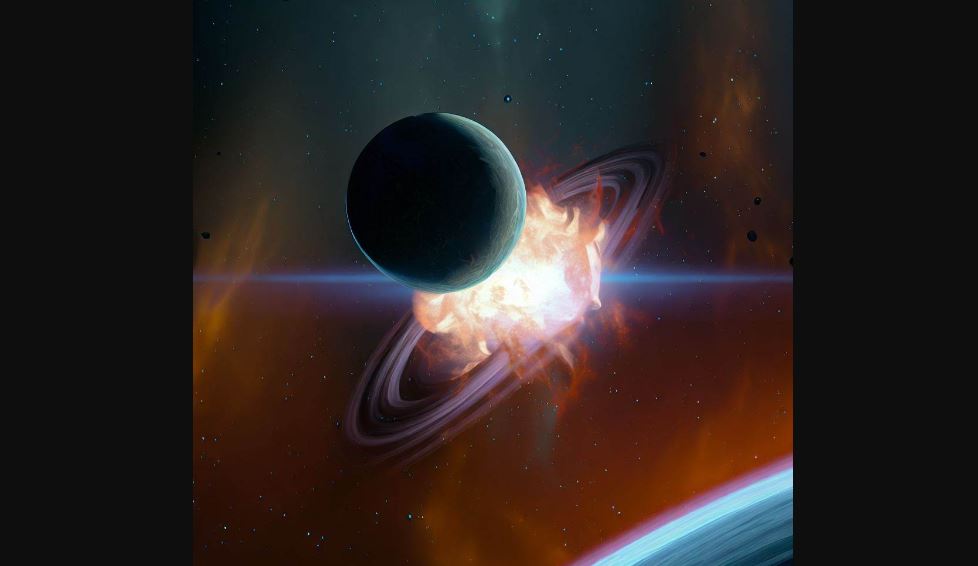Astronomers Have Observed A Rare Event Where A Star Consumed A Nearby Planet
Astronomers have observed a rare event where a star consumed a nearby planet in our own galaxy, located around 12,000 light-years away near the constellation Aquila. The star experienced a sudden outburst, becoming more than 100 times brighter in just 10 days before fading away, followed by a colder, longer-lasting signal.
Author:Daniel JamesReviewer:Karan EmeryMay 04, 202341.3K Shares843.2K Views

Astronomers have observed a rare event where a star consumed a nearby planetin our own galaxy, located around 12,000 light-years away near the constellation Aquila. The star experienced a sudden outburst, becoming more than 100 times brighter in just 10 days before fading away, followed by a colder, longer-lasting signal. Scientists from MIT, Harvard University, Caltech, and other institutions concluded that this sequence of events could only be the result of a star engulfing a planet.
Lead author Kishalay De from MIT’s Kavli Institute for Astrophysics and Space Research described the discovery as "the end-stage of the swallowing". The consumed planet was likely a hot, Jupiter-sized world that spiraled into the dying star's atmosphere and eventually into its core.
This phenomenon offers a glimpse into the future of our solar system, as Earth will meet a similar fate in around 5 billion years, when the sun is expected to burn out and destroy the inner planets. "We are seeing the future of the Earth," says De. "If observed from 10,000 light-years away, the sun would suddenly brighten, ejecting material before forming dust around it and returning to its original state."
The study involved MIT researchers Deepto Chakrabarty, Anna-Christina Eilers, Erin Kara, Robert Simcoe, Richard Teague, and Andrew Vanderburg, alongside colleagues from Caltech, the Harvard and Smithsonian Center for Astrophysics, and other institutions.
In May 2020, the team made the discovery of an outburst but it wasn't until a year later that they could explain what had happened. The initial signal was detected during a search of data taken by the Zwicky Transient Facility (ZTF) at Caltech's Palomar Observatory, which scans the sky for rapidly changing stars that could indicate supernovae, gamma-ray bursts, and other stellar phenomena. Lead author Kishalay De was specifically searching for eruptions in stellar binaries when he noticed a star that had brightened by a factor of 100 in just a week.
Further observations of the star were taken by the Keck Observatory in Hawaii, which revealed something unexpected. Most binaries emit hydrogen and helium as one star erodes the other, but the new source didn't emit either of these elements. Instead, it emitted "peculiar molecules" that can only exist at very cold temperatures.
“„This was puzzling, De said. These molecules are only seen in stars that are very cold, and when a star brightens, it usually becomes hotter. So, low temperatures and brightening stars do not go together.- Kishalay De of MIT’s Kavli Institute for Astrophysics and Space Research
After realizing that the initial signal was not from a stellar binary, De waited for more data. A year later, he and his team analyzed observations of the same star using an infrared camera at the Palomar Observatory, where they saw colder material being emitted.
This suggested that the star was merging with another star rather than exploding as a supernova. Further analysis, paired with data from NASA’s infrared space telescope, NEOWISE, revealed that the energy released by the star was surprisingly small, which led the team to realize that the star had likely merged with a planet the size of Jupiter.
With this realization, the team was finally able to explain the initial outburst. The hot flash was likely the final moments of a Jupiter-sized planet being pulled into the dying star’s atmosphere, causing the outer layers of the star to blast away and settle as cold dust over the next year.
Conclusion
De notes that scientists have been able to observe the before and after of stars being engulfed by planets, but this discovery allowed them to witness the event as it happened in real-time, making it an exciting discovery for the field.
Jump to

Daniel James
Author
Daniel James is a distinguished gerontologist, author, and professional coach known for his expertise in health and aging.
With degrees from Georgia Tech and UCLA, including a diploma in gerontology from the University of Boston, Daniel brings over 15 years of experience to his work.
His credentials also include a Professional Coaching Certification, enhancing his credibility in personal development and well-being.
In his free time, Daniel is an avid runner and tennis player, passionate about fitness, wellness, and staying active.
His commitment to improving lives through health education and coaching reflects his passion and dedication in both professional and personal endeavors.

Karan Emery
Reviewer
Karan Emery, an accomplished researcher and leader in health sciences, biotechnology, and pharmaceuticals, brings over two decades of experience to the table. Holding a Ph.D. in Pharmaceutical Sciences from Stanford University, Karan's credentials underscore her authority in the field.
With a track record of groundbreaking research and numerous peer-reviewed publications in prestigious journals, Karan's expertise is widely recognized in the scientific community.
Her writing style is characterized by its clarity and meticulous attention to detail, making complex scientific concepts accessible to a broad audience. Apart from her professional endeavors, Karan enjoys cooking, learning about different cultures and languages, watching documentaries, and visiting historical landmarks.
Committed to advancing knowledge and improving health outcomes, Karan Emery continues to make significant contributions to the fields of health, biotechnology, and pharmaceuticals.
Latest Articles
Popular Articles
